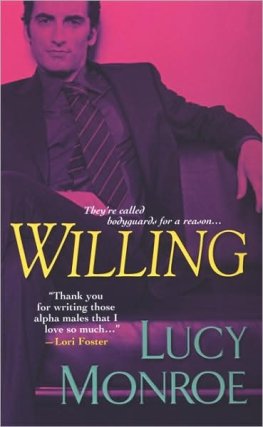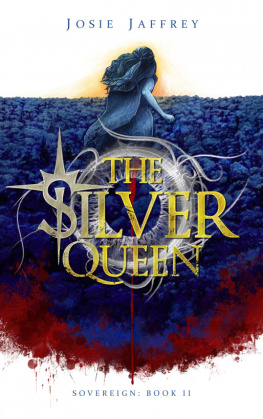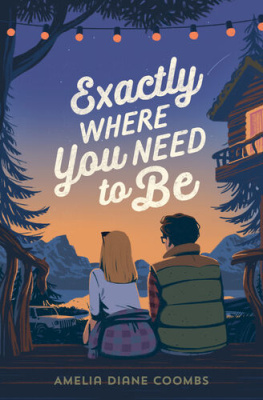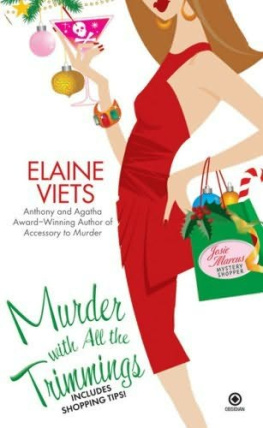CONTENTS
Guide
A COLORADO NATIVE, LINDA WOMMACK IS A COLORADO HISTORIAN and historical consultant. As an award-winning author, she has written several books on Colorado history, including From the Grave: A Roadside Guide to Colorados Pioneer Cemeteries, Our Ladies of the Tenderloin: Colorados Legends in Lace, Colorado History for Kids, Colorados Landmark Hotels, Colorados Historic Mansions & Castles, Murder in the Mile High City and Haunted Cripple Creek and Teller County. She has also contributed to two anthologies concerning Western Americana.
Linda has been a contributing editor for True West magazine since 1995, and a staff writer, contributing a monthly article for Wild West magazine, since 2004. She has also written for The Tombstone Epitaph, the nations oldest continuously published newspaper, since 1993, and writes for several publications throughout her state.
Lindas research has been used in several documentary accounts for the national Wild West History Association, historical treatises of the Sand Creek Massacre, and critical historical aspects for the new Lawman & Outlaw Museum in Cripple Creek, Colorado, which opened in 2007.
Linda feeds her passion for history with activities in many local, state, and national preservation projects, by participating in historical venues (including speaking engagements), and by hosting tours, and she is involved in historical reenactments across the state.
As a longtime member of the national Western Writers of America, she has served as a judge for the acclaimed national Spur Awards in Western American literature for eight years. She is a member of both the state and national Cemetery Preservation Associations, the Gilpin County Historical Society, and the national Wild West History Association, and she is an honorary lifetime member of the Pikes Peak Heritage Society. As a member of Women Writing the West (WWW), Linda has organized quarterly meetings for the Colorado members of WWW for the past six years and served on the 2014 WWW steering committee. She currently serves as a board member and is chair of the Women Writing the West DOWNING Journalism Award.
GROWING UP WITH THE WILD BUNCH
An imprint of The Rowman & Littlefield Publishing Group, Inc.
4501 Forbes Blvd., Ste. 200
Lanham, MD 20706
www.rowman.com
A registered trademark of The Rowman & Littlefield Publishing Group, Inc.
Distributed by NATIONAL BOOK NETWORK
Copyright 2020 by Linda Wommack
All rights reserved. No part of this book may be reproduced in any form or by any electronic or mechanical means, including information storage and retrieval systems, without written permission from the publisher, except by a reviewer who may quote passages in a review.
British Library Cataloguing in Publication Information available
Library of Congress Control Number: 2019953877
ISBN 978-1-4930-4715-4 (hardcover)
ISBN 978-1-4930-4716-1 (e-book)
 The paper used in this publication meets the minimum requirements of American National Standard for Information SciencesPermanence of Paper for Printed Library Materials, ANSI/NISO Z39.48-1992.
The paper used in this publication meets the minimum requirements of American National Standard for Information SciencesPermanence of Paper for Printed Library Materials, ANSI/NISO Z39.48-1992.
JULY 1960 AND AGAIN IN JULY 1961, JOSEPHINE BASSETT MCKNIGHT Ranney Williams Wells Morris gave interviews to Mr. Murl Messersmith. I am indebted to the Dinosaur National Monument in Jensen, Utah, where the tapes are archived. My thanks also go to the Museum of Northwest Colorado in Craig, Colorado, where the typewritten transcripts are available. Not long before her death in 1964, Josie was also interviewed by the esteemed regional historian John Rolfe Burroughs. These interviews, Josies own words, provide the structure for this work, the first full-length biography written about her.
I further consulted Burroughss excellent history of Browns Park, Where the Old West Stayed Young, as well as One Hundred Years of Browns Park and Diamond Mountain by lifelong residents Dick and Daun DeJournette and Grace McClures The Bassett Women. In the course of my research, I began to notice discrepancies between the historical record and Josies accounting of dates and places. A few of these were minor and probably due to misrecollection, for Josie was ninety years old at the time of the interviews.
As my research intensified, I began uncovering evidence supporting many of Josies accounts. The best source of court records, unpublished manuscripts, handwritten letters, historical photographs, and other related documents was the extraordinary Museum of Northwest Colorado. In an effort to clarify the storys more troubling aspects, dispel myths, and flush out the truth, I relied on my friends at the museum. Many hours were spent with the museums director, Dan Davidson, who patiently answered my questions and pointed me in the right direction. Many more hours were spent with the assistant director, Jan Gerber, as we went through filing cabinets, boxes, and computer files gathering the needed information. What a pleasure it was when I would ask for something and, almost without exception, Jan would cheerfully reply, Yes, we have that. Nearly all the photos in this book are credited to the museum, which has a wonderful photo collection. I will never forget my visits to the Museum of Northwest Colorado. Dan and Jans efforts greatly enhanced this work. For additional historical photographs, I relied on the fabulous work of my friend Coi E. Drummond-Gerhig, Digital Image Collection Administrator for the Denver Public Library. Also helpful was Michelle Fuller of the Uintah County History Center in Vernal, Utah. She graciously answered questions and provided documents and photographs.
In the summer of 2014, I had the pleasure to finally meet Valentine Hoy IV. Hoy not only answered my many questions about his pioneering family, but he also provided documents, including a digital copy of his great-great uncles unpublished memoir. In May 1920 James Jesse Shade Hoy completed his manuscript, entitled History of Browns Hole. He wrote a letter to Horace Bennett in Denver, dated August 29, 1924, in which he asked for assistance in finding a publisher. Evidently Bennett was unable or unwilling to help. Hoy was never able to get his book published. Fortunately, two hard copies of the original manuscript survive. One can be found in the archives of the Colorado History Center. The other is in the possession of Hoy IV.
Special thanks go to those who believed in this project and gave freely of their time and advice. First on that list is my husband, Frank, who gave up vacation time to take me to Dinosaur National Monument, to Josies homestead at Cub Creek, and on a few of my many trips to Browns Park and Craig, Colorado. Throughout the research and writing process, I relied on my dear friend Connie Clayton. Her cogent comments and careful editing strengthened this work immensely. I owe her my heartfelt thanks. Finally, my sincere thanks to Josephine Bassett McKnight Ranney Williams Wells Morris. She lived an extraordinary life and did what she had to do to keep her land, displaying determination and hard work in the process. I am proud to offer Josies story in her own words, for all to read and share.
Linda Wommack, July 10, 2018
LEGEND, LORE, MYSTERY, ROMANCE, AND EVEN MURDER. THESE ARE only a few of the many controversies surrounding the life of Josephine Bassett McKnight Ranney Williams Wells Morris. Raised in the legendary outlaw area of Browns Hole, located in the extreme northwest corner of Colorado, Josie created her own legend at an early age. Josie often told of her summer romance with Butch Cassidy, who spent time as a ranch hand at the Bassett ranch before forming Americas most well-known outlaw gang, the Wild Bunch. Over the years a few writers have written that Josie believed Cassidy returned from South America; one even describes her meeting once with Cassidy following his purported return. However, these writers do not cite their sources. Josie agreed to two taped interviews, conducted by Murl Messersmith on July 18, 1960, and on July 6, 1961. In these interviews, archived at the Dinosaur National Monument in Jensen, Utah, Josie mentions Cassidy quite often and eludes to his demise.












 The paper used in this publication meets the minimum requirements of American National Standard for Information SciencesPermanence of Paper for Printed Library Materials, ANSI/NISO Z39.48-1992.
The paper used in this publication meets the minimum requirements of American National Standard for Information SciencesPermanence of Paper for Printed Library Materials, ANSI/NISO Z39.48-1992.